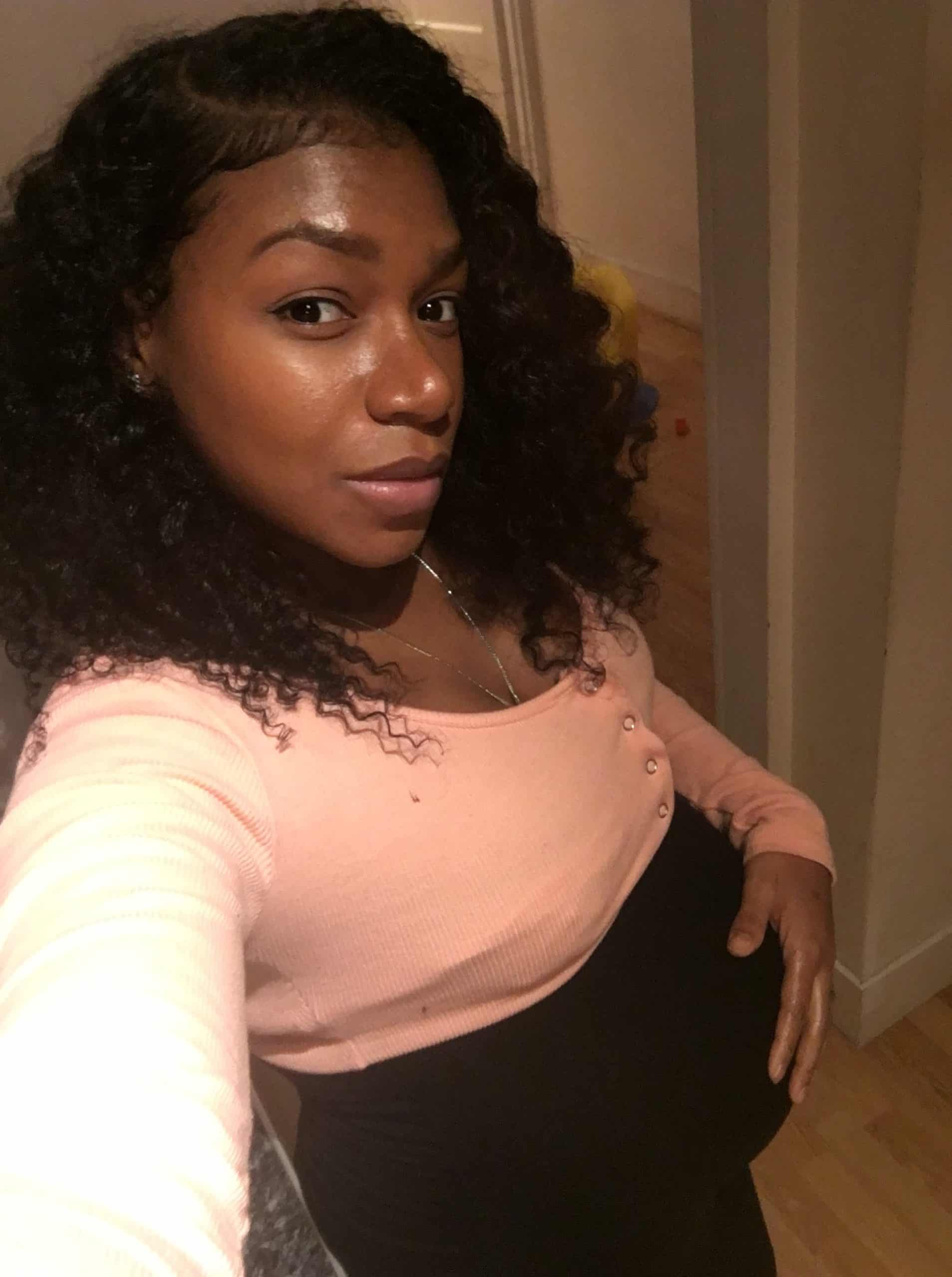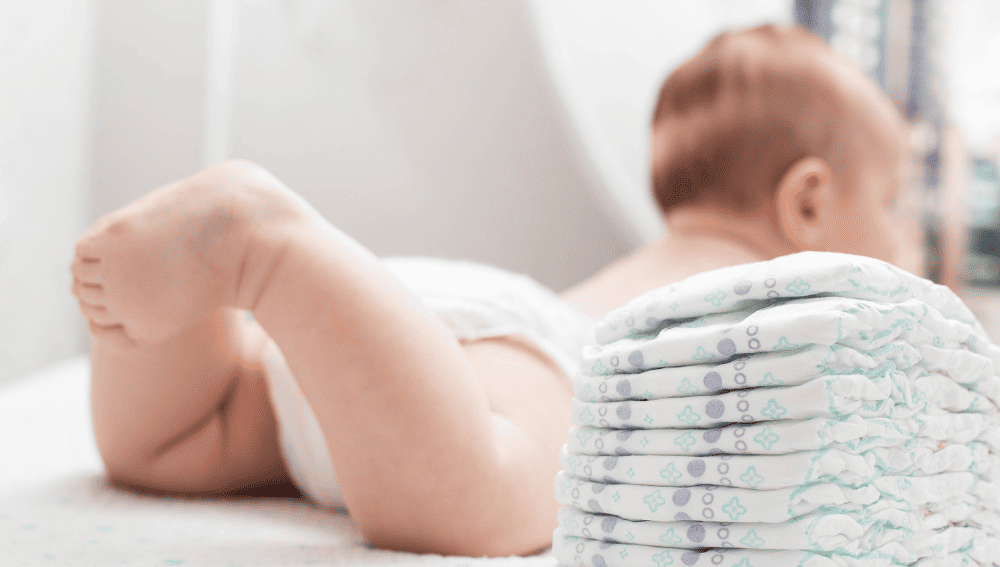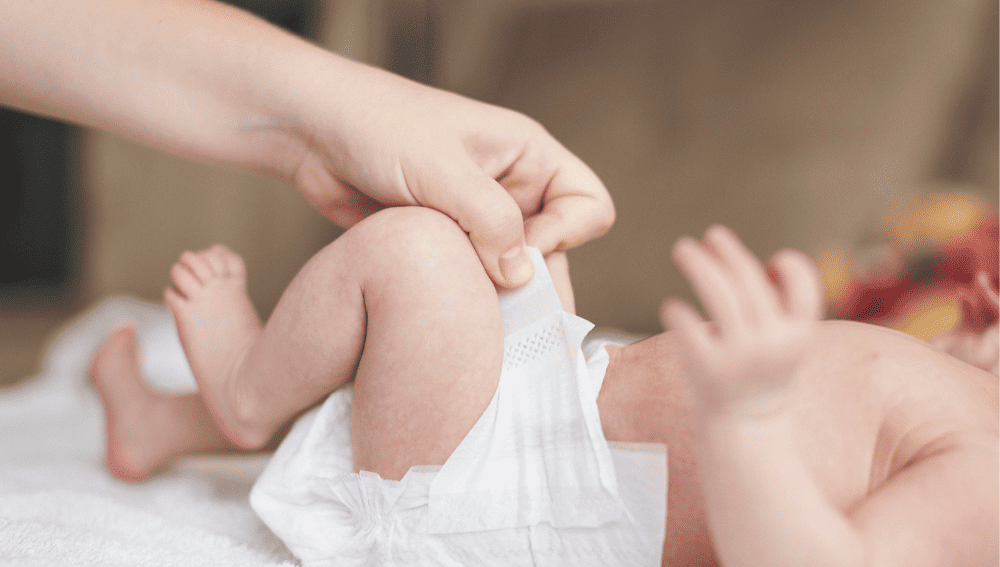When it comes to baby care, diaper changing is one of the most important tasks for new parents. However, it’s not uncommon for parents to experience a common issue – their baby boy peeing out the back of his diaper.
This can be frustrating and messy, but it’s important to understand why this happens and how to prevent it.
Understanding baby boy anatomy is key to preventing diaper leaks. Baby boys have a unique anatomy that requires special attention when it comes to diapering.
The penis should always be pointing downwards when putting on a diaper to prevent urine from escaping out the top or back. Additionally, ensuring a proper fit and size of the diaper is crucial to avoiding leaks.
Key Takeaways:
- Understanding baby boy anatomy is important for preventing diaper leaks
- Proper diaper fit and size can help prevent leaks
- Pointing the penis downwards during diapering can also prevent leaks
Understanding Baby Boy Anatomy
When it comes to baby boys, understanding their anatomy can help parents and caregivers properly care for them. The male genitalia consists of the penis and the scrotum, which houses the testicles.
It’s important to note that baby boys can have erections, even as newborns. This is a normal bodily function and is not a cause for concern. Additionally, the penis may be pointing upwards or downwards, which is also normal and can vary from baby to baby.
When changing a baby boy’s diaper, it’s essential to make sure the penis is pointing downwards to prevent any urine from escaping out of the top of the diaper. This can be achieved by gently holding the penis and pointing it downwards as the diaper is fastened.
In some cases, baby boys may pee out of the back of their diaper. This can happen if the diaper is not snug enough or if the penis is pointing upwards. It’s important to check the fit of the diaper and adjust it accordingly to prevent any leaks.
Overall, understanding baby boy anatomy can help parents and caregivers provide proper care and prevent any mishaps during diaper changes.
Recognizing Diaper Fit and Size
When it comes to diapering a baby boy, it is important to ensure that the diaper fits properly to prevent leaks and accidents.
Recognizing the right diaper fit and size can be a bit tricky, as babies come in different sizes and shapes. Here are some tips to help you choose the right diaper size and fit for your baby boy.
Checking the Waistband
One of the first things to check when selecting a diaper for your baby boy is the waistband. The waistband should fit snugly around the waist without being too tight or too loose.
A diaper with a loose waistband is likely to leak, while one that is too tight can cause discomfort and leave marks on your baby’s skin.
Considering the Size
Diapers come in different sizes, ranging from newborn to toddler. It is important to choose the right size based on your baby’s weight range. A smaller diaper may not fit properly, while a bigger or larger diaper may cause leaks or discomfort.
Always check the weight range on the diaper packaging to ensure that you are selecting the right size for your baby boy.
Ensuring Proper Fit
To ensure that the diaper fits properly, make sure that it is snug around the waist and thighs. The leg cuffs should be gently wrapped around the legs without being too tight or leaving gaps.
The diaper should also be centered on your baby’s bottom, with the waistband sitting at the navel area.
Gender-Specific Diapers
While some diaper brands may offer gender-specific diapers, it is important to note that the fit and size requirements are generally the same for both baby boys and girls. However, baby boys may require a bit more coverage in the front to prevent leaks.
In conclusion, recognizing the right diaper fit and size is crucial for keeping your baby boy comfortable and dry. Checking the waistband, considering the size, ensuring proper fit, and selecting gender-specific diapers (if desired) can help you choose the right diaper for your little one.
Dealing with Diaper Leakage
Diaper leakage is a common issue that parents face when taking care of their babies. It can be caused by a variety of factors, including the volume of pee, the absorbency of the diaper, and the fit of the diaper. Leakage can lead to discomfort for the baby and frustration for the parents.
One of the main causes of diaper leakage is a lack of absorbency. Diapers are designed to absorb a certain amount of urine, but if the volume of pee exceeds the diaper’s capacity, leakage can occur.
To prevent this, parents should choose diapers with a higher absorbency level.
Another factor that can contribute to diaper leakage is the fit of the diaper. If the diaper is too loose or too tight, it can cause leaks.
Parents should ensure that the diaper fits snugly but not too tightly. They should also check the diaper regularly to make sure that it hasn’t shifted or become bunched up.
Blowouts can also be a cause of diaper leakage. These occur when the baby’s poop escapes the diaper and gets on their clothes. To prevent blowouts, parents should choose diapers with a snug fit around the legs and waist.
If a baby is experiencing frequent diaper leaks, it can cause red marks and discomfort on their skin. To prevent this, parents should change their baby’s diaper as soon as it becomes wet or soiled.
They should also use a diaper cream to protect their baby’s skin from irritation.
In conclusion, diaper leakage can be a frustrating issue for parents, but it can be prevented by choosing diapers with a higher absorbency level, ensuring a proper fit, and changing the diaper regularly.
By following these tips, parents can keep their baby comfortable and happy.
Choosing the Right Diaper Brand
When it comes to choosing the right diaper brand, parents have a lot of options to consider. One of the most popular brands is Pampers, which offers a wide range of disposable diapers for babies of all ages.
Pampers diapers are designed to be comfortable and absorbent, with features like a soft, breathable outer cover and a wetness indicator that lets parents know when it’s time for a change.
They also offer overnight diapers that are specifically designed to provide extra protection and absorbency for babies who sleep for longer periods of time.
Of course, Pampers isn’t the only brand on the market. Other popular options include Huggies, Luvs, and Seventh Generation, among others. When choosing a diaper brand, parents should consider factors like cost, availability, and their baby’s specific needs.
For example, if a baby is prone to leaks or has sensitive skin, parents may want to choose a diaper brand that offers extra absorbency or hypoallergenic materials. On the other hand, if cost is a concern, parents may want to look for a more budget-friendly option.
Ultimately, the right diaper brand will depend on a variety of factors, including the baby’s age, size, and individual needs. By doing some research and considering all of the available options, parents can choose a diaper brand that will keep their baby comfortable and dry, day and night.
Also see: How To Prevent Diaper Blowouts Up The Back
Effective Diaper Changing Routine
Changing diapers can be a challenging task for new parents, especially when their baby boy pees out the back of his diaper. However, with an effective diaper changing routine, parents can make this task easier and more efficient.
The following are some tips for an effective diaper changing routine:
1. Gather All Necessary Supplies
Before changing the diaper, parents should gather all necessary supplies such as diapers, wipes, diaper rash cream, and a changing pad. This will prevent them from having to leave the baby unattended during the changing process.
2. Prepare the Changing Area
Parents should prepare the changing area by laying the changing pad on a flat surface and ensuring that it is clean and dry. They should also make sure that the area is free from any hazardous objects that the baby could grab.
3. Remove the Dirty Diaper
To remove the dirty diaper, parents should lift the baby’s legs by the ankles and gently slide the diaper out from underneath. They should use the front of the diaper to wipe away any excess urine or feces.
4. Clean the Baby
Parents should use wipes to clean the baby’s bottom thoroughly, paying special attention to the folds and crevices. They should also use a diaper rash cream to prevent any irritation.
5. Put on a Fresh Diaper
Once the baby is clean and dry, parents should put on a fresh diaper, making sure that it fits snugly but not too tightly. They should also make sure that the back of the diaper is high enough to prevent any leaks.
By following these tips, parents can establish an effective diaper changing routine that will help them handle any situation, including a baby boy peeing out the back of his diaper.
Preventing Skin Irritations
Skin irritations caused by urine leakage can be a common issue for baby boys. It is important to take preventive measures to avoid discomfort and potential infections.
Here are some tips to help prevent skin irritations:
Change Diapers Frequently
Changing diapers frequently is one of the most important things parents can do to prevent skin irritation. Leaving a wet or soiled diaper on for too long can cause redness and discomfort. Make sure to check the diaper often and change it as soon as it is wet or soiled.
Use Gentle Wipes
Using gentle wipes is important to prevent further irritation. Avoid wipes that contain alcohol or fragrances as they can be harsh on baby’s skin. Instead, opt for wipes that are specifically designed for sensitive skin.
Clean Thoroughly
When changing a diaper, it is important to clean the area thoroughly. Use warm water and a gentle cleanser to wipe the area clean. Make sure to pat the area dry with a soft towel to avoid further irritation.
Apply Diaper Cream
Applying diaper cream can help prevent skin irritation by creating a barrier between the skin and the diaper. Look for a cream that contains zinc oxide, which can help soothe and protect the skin.
Check the Fit of the Diaper
Make sure the diaper fits properly to avoid leaks. A diaper that is too small or too big can cause leaks and potential skin irritation. Check the fit of the diaper often and adjust as needed.
By following these tips, parents can help prevent skin irritations caused by urine leakage. If redness or crying persists, consult a healthcare professional for further advice.
Managing Night Time Diapering
Managing night time diapering can be a challenging task for parents, especially when their baby boy starts peeing out the back of the diaper.
However, with a few simple tips and tricks, parents can ensure that their baby boy stays dry and comfortable throughout the night.
One of the first things to consider is the type of diaper being used. Parents should opt for a diaper that is designed specifically for night time use, as these are often more absorbent and can hold more liquid.
Additionally, parents may want to consider using a diaper that has a higher back waistband to prevent leaks.
Another important factor to consider is the frequency of diaper changes. Newborns may require more frequent changes, as they have smaller bladders and may need to urinate more often.
Parents should also be mindful of the amount of liquids their baby boy is consuming before bed, as this can affect urinary frequency.
To protect the mattress and bedding, parents may want to consider using a waterproof mattress cover. This can help prevent any leaks or accidents from damaging the mattress or sheets.
In addition to these tips, parents can also try positioning their baby boy differently in the diaper. Placing the penis downwards can help prevent leaks out the back of the diaper. Parents can also try using diaper inserts or liners for added absorbency.
Overall, managing night time diapering for a baby boy requires a combination of the right diaper, frequent changes, and proper positioning. By following these tips, parents can ensure that their baby boy stays dry and comfortable throughout the night.
Frequently Asked Questions
How can I prevent my baby boy from peeing out the back of his diaper?
To prevent your baby boy from peeing out the back of his diaper, make sure the diaper is snug but not too tight. You can also try changing the diaper more frequently, especially if your baby is a heavy wetter. Another option is to use a diaper with a higher back waistband.
What are some tips for preventing diaper leaks in baby boys?
To prevent diaper leaks in baby boys, make sure the diaper fits properly and is snug but not too tight. You can also try using a diaper with a higher back waistband or a diaper specifically designed for boys. Changing the diaper more frequently can also help prevent leaks.
Is it normal for a baby boy to pee out the back of his diaper?
It is not uncommon for baby boys to pee out the back of their diapers, especially if the diaper is too loose or not positioned properly. However, if it happens frequently, you may want to try different diaper brands or sizes.
Are there specific diaper brands that are better for preventing leaks in baby boys?
There are many diaper brands that are designed to prevent leaks in baby boys. Some popular brands include Pampers, Huggies, and Luvs. However, every baby is different, so you may need to try a few different brands to find one that works best for your baby.
What should I do if my baby boy keeps peeing up the back of his diaper?
If your baby boy keeps peeing up the back of his diaper, try changing the diaper more frequently or using a diaper with a higher back waistband. You may also want to try a different diaper brand or size. If the problem persists, consult your pediatrician.
How do I know if my baby boy’s diaper is too big and causing leaks?
If your baby boy’s diaper is too big, it may be causing leaks. Signs that the diaper is too big include gaps around the legs or waist, or if the diaper is sagging. Try a smaller size or a different brand to see if it helps prevent leaks.
Related Posts:
- Chewing On Clothes Symptom
- How To Freeze Breast Milk Flat?
- How to Fix Baby’s Flat Head without Helmet?

Iesha is a loving mother of 2 beautiful children. She’s an active parent who enjoys indoor and outdoor adventures with her family. Her mission is to share practical and realistic parenting advice to help the parenting community becoming stronger.



